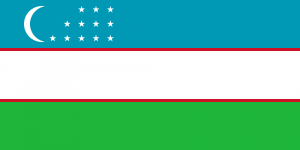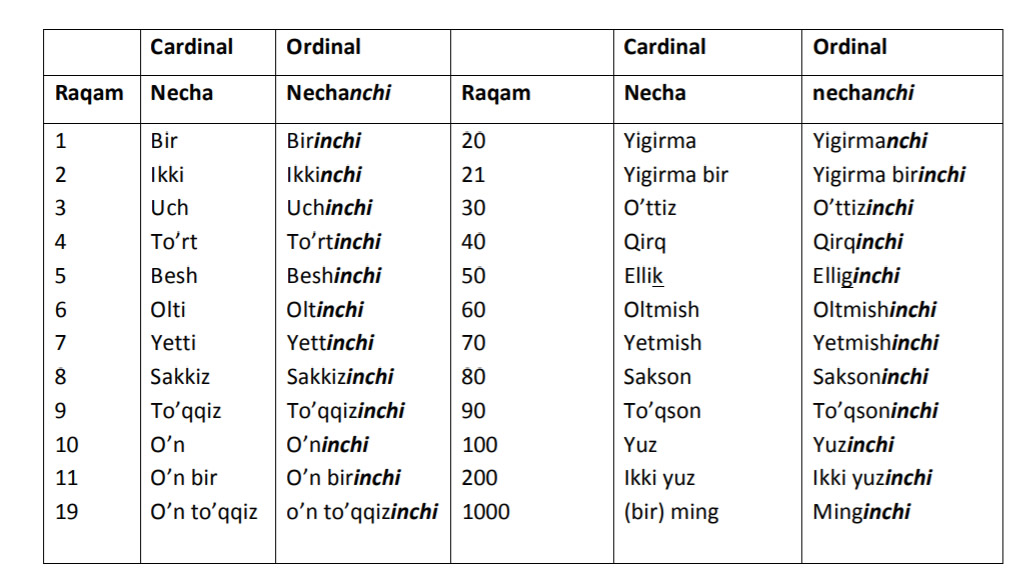Language/Northern-uzbek/Vocabulary/Cardinal-and-ordinal-numbers
< Language | Northern-uzbek | Vocabulary
Jump to navigation
Jump to search
Rate this lesson:
In Uzbek language numbers from 1 to 10 are unique words. But numbers from 11 and upwards are formed by using the following pattern: for example 11 can be formed by using 10 + 1 while connecting them, 12 can be formed by using 10 + 2 and so on. 4.1.
Ordinal numbers in Uzbek language tell the order of things and their rank: my first teacher.
They tell the order of things in a set: first, second, third, etc.
Ordinal numbers do not show quantity. Ordinal numbers are formed by help of suffix – nchi or –inchi after consonants.
In the sentences they look like Number+nchi/inchi + Noun.
For example:
- Mening birinchi o’qituvchim.- My first teacher.
If it is a compound numeral then each numeral is written separately.
For example:
- Yigirma birinchi uy. – House [number] twenty one.


